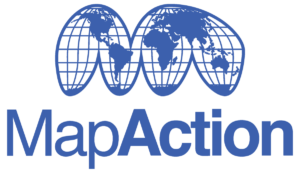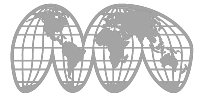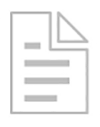Saving lives in humanitarian disasters around the world
Working at the scene of some of the world’s most devastating humanitarian disasters, this volunteer-driven charity uses Esri’s ArcGIS to produce up-to-date maps for humanitarian aid organisations. Its new Kiosk product makes vitally important location-based intelligence available to aid workers in digital formats, helping them to respond more quickly and, ultimately, help save more lives.
The Customer
When earthquakes or floods occur, epidemics spread and conflicts erupt, humanitarian aid agencies have to be able to respond quickly. But before they can act, they need to know which roads are still passable, where vulnerable people are sheltering, what facilities are available nearby and much more besides.
MapAction is the only volunteer-driven charity of its kind that provides rapid, on-the-ground mapping and precise situational data to humanitarian aid agencies in response to a humanitarian disaster, or during a humanitarian crisis. This critical and timely insight enables international aid organisations to react promptly and operate more effectively to help save lives and minimise suffering.
The Kiosk gives a common operational picture to all responders and agencies working on-the-ground in a disaster situation
MapAction can now make a larger range of maps available to more people, more quickly, which speeds up the response to evolving crises
The use of ArcGIS enables MapAction to facilitate data sharing even in regions where there is no or poor Internet connectivity
The Challenge
Since its inception in 2002, MapAction has become an indispensable part of the global response to humanitarian crises. As soon as its volunteer teams, who are specially trained in disaster response, arrive in affected areas, their services are in high demand from multiple organisations. Consequently, on-the-ground teams face growing pressure to produce and distribute more maps, more quickly.
MapAction is also experiencing increased demand for customised maps. For example, search and rescue teams may need a specific map relating to a village that has been cut off by a landslide. MapAction volunteers try to respond to as many of these individual requests as they possibly can, but their time is stretched.
To address both these issues, MapAction wanted to find a way to share its maps and data in digital formats in the field, making it possible for aid agencies to obtain additional copies of maps more quickly and create customised mapping intelligence products for themselves. However, in areas of conflict and natural disaster there is often either no Internet access, or poor connectivity, and this inevitably presents a significant barrier to digital data sharing.
The MapAction Kiosk enables us to provide maps and situational information to more people, very quickly, helping them to make better, faster decisions and alleviate human suffering
Liz Hughes – CEO, MapAction
The Solution
Esri UK has supported the work of MapAction for over twelve years, and ArcGIS, Esri’s geographic information system (GIS) platform, plays a pivotal role in the delivery of MapAction’s emergency mapping service. MapAction secured funding for a new ‘selfservice’ mapping facility, and sought out the expertise of Esri UK’s professional services team to help it design and deliver this inventive project using ArcGIS.
Named the MapAction Kiosk, the new GIS solution developed operates using the principles of web mapping and runs on a lightweight laptop connected to a powerful WiFi router. Aid workers in the vicinity of MapAction’s field base can connect to the Kiosk via WiFi and print additional copies of any maps produced by MapAction’s volunteer team. In addition, they can view interactive maps, zoom into specific regions and turn on required data layers to create any customised maps that they might need to inform aid missions. Finally, responders can use the Kiosk to download MapAction’s up-to-date spatial data and incorporate it into their own GIS systems.
“The challenge of developing a data sharing solution for use in the field, with no Internet, was at first quite daunting,” admits Matt Pennells, web mapping project manager and long-standing MapAction volunteer. “However, we achieved our goal using ArcGIS and, incredibly, can now deliver web mapping in areas where there is no web.”
We achieved our goal using ArcGIS and, incredibly, can now deliver web mapping in areas where there is no web
Matt Pennells – CEO, web mapping project manager, MapAction volunteer
Benefits
MapAction will continue to produce the paper maps that aid organisations around the world have come to rely on. However, now, this unique charity will also be able to make its invaluable location-based intelligence accessible in digital formats to many more people, more quickly, to improve the effectiveness of life-saving humanitarian missions.
Notably, the MapAction Kiosk will help the charity to distribute its maps to aid workers who might otherwise not have had access to a paper copy. It will therefore make situational data accessible to a wider audience and facilitate greater collaboration between multiple aid agencies and local groups. Pennells says: “The Kiosk helps us to give a common operational picture to all responders and agencies working on-the- ground in a disaster situation. The sooner they have this shared knowledge, the closer they can work together to reach people at risk.”
In addition, the Kiosk gives aid workers the ability to create their own customised maps for the first time. They can gain instant access to the mapping intelligence they need – in the precise format they need it – to enable them to respond quickly to emerging new scenarios.
Use of the Kiosk will free up time for MapAction’s field teams, enabling them to develop additional specialised maps that can really make a difference to the success of aid missions. Indeed, Pennells estimates, “In a ten day deployment, the self-serve function of the Kiosk could save volunteers as much as half a day of printing and administration time.”
MapAction’s CEO Liz Hughes is convinced that the Kiosk will play a vital role in helping the charity to safeguard vulnerable communities. She says: “In most disasters there is a direct correlation between the speed of the response and the number of lives saved. The MapAction Kiosk enables us to provide maps and situational information to more people, very quickly, helping them to make better, faster decisions and alleviate human suffering.”




